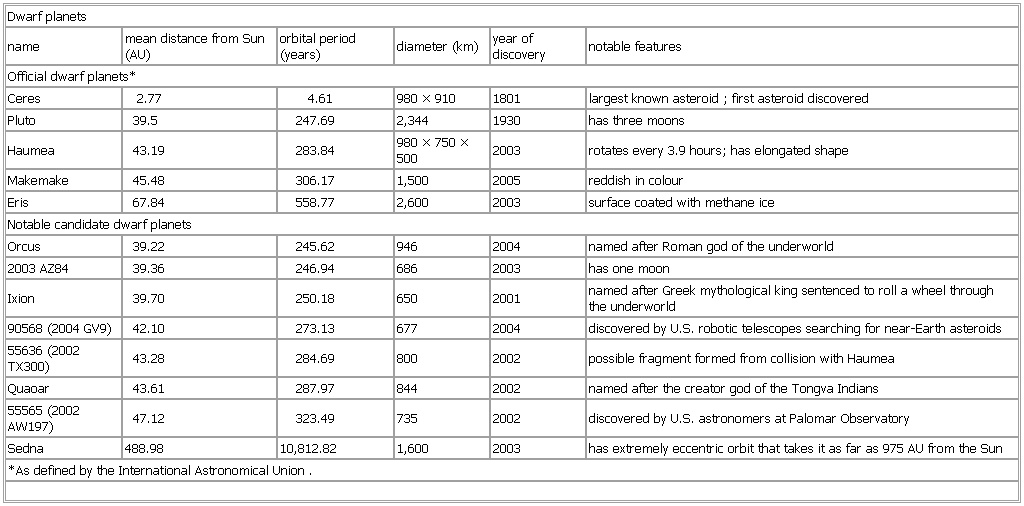dwarf planet — ˌdwarf ˈplanet 8 [dwarf planet] noun a round object in space that goes around the sun but is not as large as a planet and does not clear other objects from its path • the dwarf planets Pluto, Ceres, Eris, Makemake and Haumea • These bodies have… … Useful english dictionary
Dwarf planet — Not to be confused with Minor planet. Ceres as seen with the Hubble Space Telescope. It is the only dwarf planet in the asteroid belt … Wikipedia
Planets beyond Neptune — Planet X redirects here. For the Planet X doomsday scenario, see Nibiru collision. For other uses, see Planet X (disambiguation). Trans Neptunian planets redirects here. For dwarf planets and small bodies discovered beyond Neptune, see Trans… … Wikipedia
Planets in astrology — ‹ The template below (Astrology) is being considered for merging. See templates for discussion to help reach a consensus. › Astrology … Wikipedia
dwarf planet — ▪ astronomy body, other than a natural satellite (moon), that orbits the Sun and that is, for practical purposes, smaller than the planet Mercury yet large enough for its own gravity to have rounded its shape substantially. The International… … Universalium
Planets in science fiction — are fictional planets that appear in various media, especially those of the science fiction genre, as story settings or depicted locations. [cite book last = Mann first = George authorlink = coauthors = title = The Mammoth Encyclopedia of Science … Wikipedia
Ceres (dwarf planet) — For other uses of the name Ceres , see Ceres. Ceres Ceres as seen by Hubble Space Telescope (ACS). The … Wikipedia
List of dwarf planet candidates — At present, the International Astronomical Union classifies five objects as dwarf planets: Ceres, Pluto, Eris, Haumea, and Makemake, though dozens of others are thought likely to be classified as such in the future. The qualifying feature of… … Wikipedia
Makemake (dwarf planet) — Makemake Makemake as seen by the Hubble Space Telescope Discovery Discovered by … Wikipedia
Eris (dwarf planet) — Eris Eris (centre) and Dysnomia (left of centre). Hubble Space Telescope … Wikipedia

